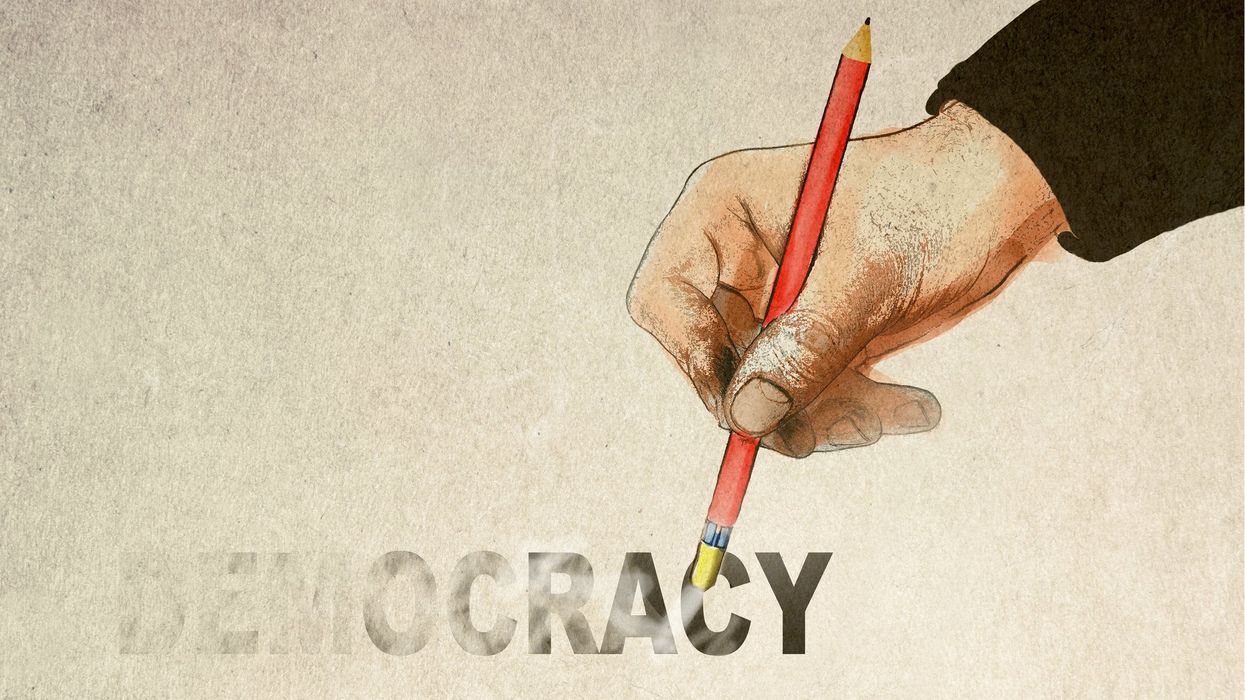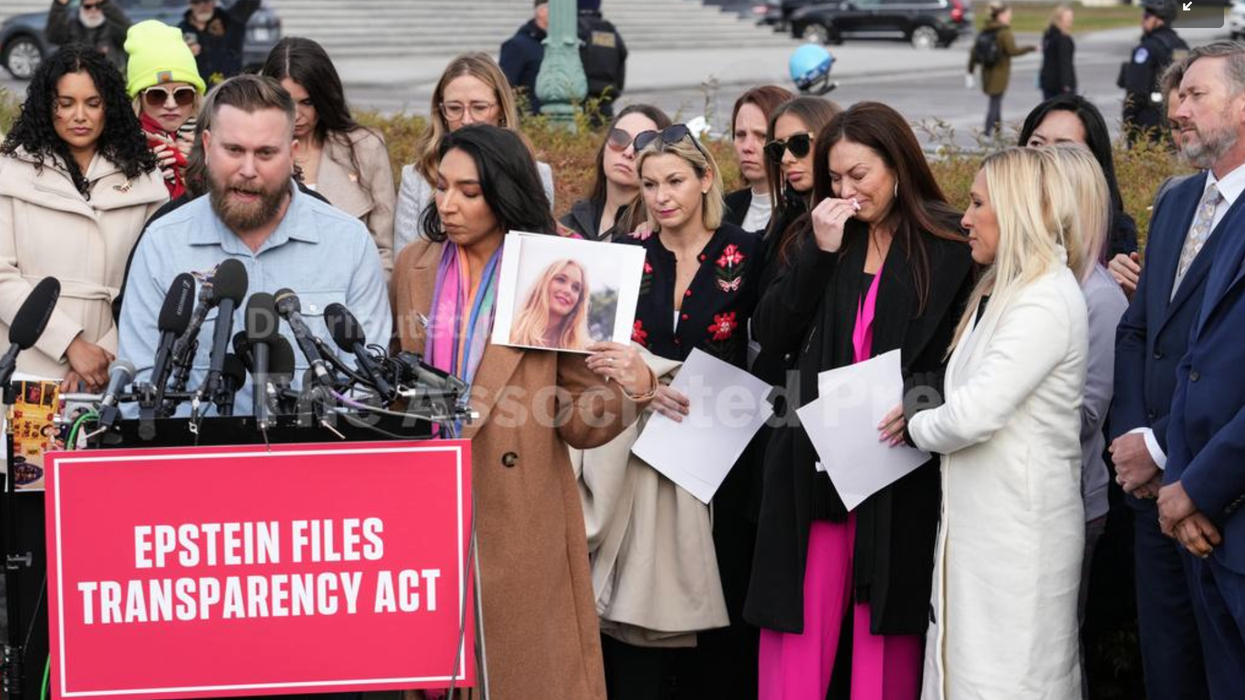“In this courtroom and under my watch, the rule of law is a bright beacon which I intend to follow,” Judge John Coughenour commented on Trump’s efforts to undo birthright citizenship.
When Trump’s Office of Management and Budget (OMB) offered federal employees the ability to retire early in exchange for continued pay until September, it referred to the offer as a “fork in the road.” Employees could either take the deal or face "significant" reforms, layoffs, and an expectation that they be "loyal." Putting aside the offer’s legality, the message was clear: either take the deal or face uncertainty and possible termination.
With each week, Americans are facing more “forks in the road.”
The Trump administration, backed by his Project 2025 allies, continues its assault on the rule of law—facing little opposition from Republican leadership, including here in Virginia.
The latest move? Slashing already-appropriated National Institute of Health (NIH) funding for research institutions tackling cancer, infectious diseases, and dementia—institutions like the University of Virginia, Virginia Tech, and Virginia Commonwealth University. In the Commonwealth, this is significant; these three universities alone will bring over $400 million in research to the state this year. The funding supports 7,684 jobs and generates $1.73 billion in yearly economic activity. But in other states, including many that voted for Trump, the stakes are even higher. Places like Vanderbilt Medical Center in Tennessee, MD Anderson Cancer Center in Texas, Washington University in St. Louis, University of Alabama at Birmingham, and Cincinnati Children's Hospital in Ohio stand to lose millions as their research is placed in jeopardy.
Trump tried this before, pushing to cut NIH overhead funding in 2017, but Congress rejected it. Now, he is bypassing Congress altogether, issuing what is likely another illegal executive directive to do so. Republican statewide leaders remain on the sidelines, either complicity silent or, in the case of Virginia Gov. Youngkin, embracing the cuts as “common sense.”
Few would argue against finding greater efficiencies in our research institutions. But does this slash-and-burn approach make sense? And is it even legal?
That answer may come soon. Arguing that the Consolidated Appropriations Act of 2024 prohibits the administration from changing overhead rates without congressional approval, twenty-two state attorneys general have sued to block the cuts. Not one Republican Attorney General, including Virginia’s own Jason Miyares, has joined them. A federal court has ordered NIH payments to temporarily resume—but only to institutions in those 22 states. Research institutions in other states, including Virginia, are now on the outside looking in. Their funding—and their ability to deliver groundbreaking research—is in jeopardy. Will Virginia or other Republican AGs join the lawsuit? Don’t count on it.
A SLOW-MOVING CONSTITUTIONAL CRISIS
Many of Trump’s early moves have stalled as the result of dozens of lawsuits in court. But to assume his agenda has been seriously compromised would be a mistake and misunderstand a larger scheme aimed at the heart of our institutions and even democracy itself. The playbook is simple: create disruption and force dilemmas. Begin with an issue with broad public appeal—like government efficiency or cuts to universities. Then, issue a directive that goes far beyond what is necessary, sidestepping Congress in the process. Trump’s far-reaching directive to freeze funding to a wide swath of nonprofits is a classic example. The opposition is left to respond by press releases or filing lawsuits. If courts uphold Trump’s edict, he wins. If the courts strike down Trump’s directive, he then attacks the judiciary and appeals, hoping for a favorable ruling from a higher court. If all else fails, quietly ignore the court order—as happened when federal funds for some programs remained frozen even after a judge ordered their release.
Throughout the debate, Trump’s allies continue to assert the power of the Presidency, attack our institutions, and suggest that our democratic process and Constitution do not work as intended. What results is an increase in anger among large segments of the electorate that question democracy’s ability to deliver on its promises, or who believe that Trump is merely trying to root out the malingerers in a bloated federal bureaucracy. Whether this amounts to a “coup” can be argued, but the pattern is clear: Trump is actively undermining the institutions that uphold democracy. The real question is what happens years from now when legitimacy has been further eroded and the damage is irreversible.
GOP IN LOCKSTEP
As Trump tests the rule of law, Republican elected leaders remain silent or endorse his actions.
Nine of the 10 states most dependent on federal funds as a share of their total revenue both voted for Trump last fall and have Republican-dominated legislatures. While California is the biggest loser, Texas, Ohio, and Florida are in the top 10. Few GOP leaders have shown any concern about his actions.
When Trump issued an executive order targeting the federal workforce—145,000 of whom live in Virginia—Republican Gov. Youngkin dismissed concerns, calling the federal government "bloated" and saying he expects "job reductions." When the administration proposed that federal employees take early retirement or face "significant" reforms, layoffs, and an expectation that they be "loyal," no Republicans raised questions about whether funding would be available to pay for the buyout. Funding for most federal agencies expires on March 14 and Congress would need to include a special appropriation to make this happen, if it can even pass a supplemental budget to keep the government open by that date. Trump has now ended the early retirement option. Fewer took the offer than expected and we will see if Trump honors his promise.
When Trump attempted to unilaterally overturn birthright citizenship—a direct violation of the 14th Amendment—Youngkin and Miyares said nothing. They were similarly silent when the administration froze federal funds to charitable organizations like Lutheran Services and Commonwealth Catholic Charities, both of which provide services ranging from adoption assistance to food kitchens. Even after 23 Democratic attorneys general sued and convinced two federal judges to halt the freeze, reports surfaced that the administration continued withholding funds, raising the question of whether Trump’s team deliberately violated a court order. And when 11 of Virginia’s 31 federally qualified health centers —many in the state’s poorest areas—reported funding disruptions, neither Youngkin publicly intervened to address the problem.
When Trump proclaimed his disdain for the Federal Emergency Management Agency (FEMA), stating that it “ SHOULD BE TERMINATED!” Florida Gov. Ron DeSantis immediately jumped to his aid, supporting a funding freeze for an agency that has delivered $8.5 billion in relief for twenty-one disasters in his state since 20ll, and suggesting that block funds made to states is a better option than the present arrangement. DeSantis conveniently said nothing about what happens if his state’s block grant is not enough to address the next disaster.
Some red states are even establishing their own government efficiency agencies. Governors in Iowa, Oklahoma, and New Hampshire have done this by executive order, while others are being created by state legislatures like Texas and Missouri. What we have not seen, however, are executive branch freezes of funds previously appropriated by state legislatures.
PROFILES IN COURAGE
Termination of federal employees is now widespread. Reuters reported that 1,000 have been laid off at the Department of Veterans Affairs, and CNN detailed that 2,200 had been fired at the Interior Department. Nonetheless, the Trump train initiatives have significant detractors, some of whom exhibit significant courage in the face of intimidation. When a senior official at FEMA directed subordinates to continue a freeze on funding, even after a federal judge ordered the administration—for the second time—to stop such pauses, four FEMA administrators said no and continued to spend monies authorized by Congress. They were fired.
The most significant resistance, however, is occurring at the Justice Department. When Trump appointees requested that charges against New York Mayor Eric Adams be dropped, seven prosecutors in New York and Washington—including career lawyers overseeing public corruption cases— resigned rather than cooperate, and criticized the DOJ’s action as a “quid pro quo” in exchange for Adams providing assistance for Trump’s deportation actions. These are not liberal attorneys. Instead, many of them are Federalist Society members who clerked for Justices Scalia, Roberts, and Kavanaugh. And their courage provides an example to be emulated.
LITTLE RESPECT FOR COURTS—OR AMERICAN TRADITIONS
Trump has never hidden his contempt for the courts or his disdain for the checks and balances that define American democracy. Now, Vice President J.D. Vance and Elon Musk have taken up the mantle, with Vance claiming that “judges aren’t allowed to control the executive’s legitimate power,” and Musk calling the court rulings against the funding freeze “shady” and “absolutely insane.”
Both seem to ignore Article III of the Constitution and the concept of judicial review—a principle central to American law since the early 1800s that allows federal courts to check executive power. There is a legal way to cut spending—it’s called the congressional appropriations process. As the American Bar Association (ABA) put it, Trump’s approach “may appeal to a few” but is “chaotic,” “wrong,” and “contrary to the rule of law.”
In the coming weeks, expect Trump to flood the zone with more “democracy dilemmas”—manufactured crises designed to expand executive power at the expense of Congress and the courts. And Americans will discover if our leaders will fight for us and protect our system of checks and balances so critical to democratic governance. Our “forks in the road” are likely to be many and will require as much courage as we can summon.
Portions of this post appeared in the Virginia Mercury.
David J. Toscano is an attorney and the former Democratic Leader in the Virginia House of Delegates. He is the author of Fighting Political Gridlock: How States Shape Our Nation and Our Lives, published in 2021 by the University of Virginia Press and Bellwether: Virginia’s Political Transformation, 2006-2020, published in 2022 by Hamilton Books.



















